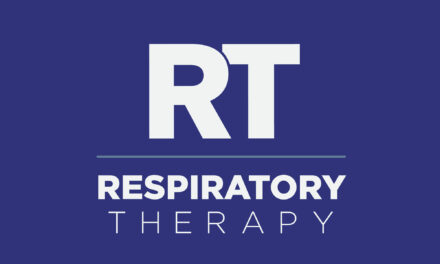Autonomy plus respect equal close and dutiful care at Children’s Hospital Boston, one of the nation’s top children’s hospitals.
By Justin W. Sanders
Karyn Reinhardt was a traveler for 9 years before she found a home in the respiratory care department at Children’s Hospital Boston in 2008.
“You walk in the front door and you just know,” she says, remembering her first encounter with the hospital. “It’s nice and it’s clean. The people are friendly. When I first got here, I had a patient from Hawaii! Unbeknownst to me, people come from literally all over the world just to get treated here.”

The primary pediatric teaching hospital for Harvard Medical Center, Children’s has grown from its humble 20-bed beginnings in 1869 into an internationally renowned health care operation. The comprehensive, not-for-profit trauma center now boasts nearly 400 beds and is one of the largest pediatric medical facilities in the world. Of the more than 25,000 inpatient admissions Children’s records each year, more than 8,000 are children in need of respiratory care. Reinhardt is one of nearly 60 respiratory therapists in a department featuring four separate intensive care units (neonatal, medical-surgical, cardiac, and medicine) and an intermediary care program (ICP). The department’s cardiac surgery partition receives referrals from every corner of the globe, and its acclaimed extracorporeal membrane oxygenation (ECMO) program is one of only two of its kind in the state of Massachusetts, seeing 60 to 70 patients come through in any given year.
Simply put, Reinhardt and her fellow therapists stay immensely busy, and yet amidst the flood they maintain a standard of treatment quality that earned Children’s fourth place in the respiratory disorders category in US News and World Report‘s 2010-11 rankings of the nation’s top hospitals. They can do this because they are uniquely talented professionals, but also because their talents are given a unique chance to shine within an operational system that merges teamwork and individual autonomy in surprising and exciting ways.
A “Two-Person Sport”
Kevin Bullock, a clinical supervisor in Children’s respiratory care department, describes the facility’s workflow and staffing structure as “a multidisciplinary approach to care. Not a whole lot of it is done by one department. From nursing to therapy to management, we tend to meet as groups.”
The group dynamic begins at the top. Where most hospital departments have one manager and then coordinators for each specialty, Bullock is one of five supervisors on the department’s managerial team. He is officially responsible for Children’s cardiac intensive care unit, but he works closely with his fellow managers to make sure all facets of the department run smoothly, from ECMO to the ICP. This communal leadership structure was never part of the master plan, but rather came out of necessity when a former departmental manager left on short notice. Yet, it has defied expectations and worked exceedingly well thanks to the five individuals’ special ability to, as Bullock describes it, keep each other apprised of happenings in their respective units and across the department as a whole. “We’ve been pleasantly surprised at how well information has been flowing,” Bullock says.
Bullock’s fellow co-supervisor, Daria Donelly, the managerial team member responsible for the medical ICU as well as the ICP, finds that Children’s group leadership dynamic helps her “make decisions more confidently and quickly” as both a manager and a clinician. “With five of us, we’re able to divvy up responsibility while still keeping our hands dirty,” she says. “Like say we had a piece of ailing equipment, [the managers are] aware of that as quickly as the rest of the staff, whereas one manager wouldn’t be so close to everything so as to be notified of that so quickly.”

Karyn Reinhardt

Kevin Bullock
Quick and confident decision-making, stellar communication skills, and minute-to-minute knowledge of the facility’s technical aspects are crucial elements in the daily execution of a rigorous treatment schedule heavily weighted toward critical care. Of course, any respiratory department faces myriad complexities on any given day, but the challenges of pediatric care can be particularly baffling. “Even if two pediatric patients have similar diagnoses, [our approach to their care might be] totally different,” says Bullock. “We have all these congenital anomalies to treat, cardiac defects, orthopedic issues, general surgery issues, and then there are acquired illnesses—the list of diagnoses with critical care in pediatrics is much larger [than in adults], and they respond [to treatment] differently. “
“It’s very different,” says Reinhardt. “Just the communication between adults and a baby or child is different. [To know if you’re] causing pain in newborns, you just have to go by vital signs. Dosages are different. Babies are more tenuous when you make changes, whereas adults are more adaptable to changes. It’s definitely a different side of respiratory therapy.”
To consistently provide close and dutiful care, Children’s respiratory department generally brings on between 10 and 12 therapists per shift, one or two being ECMO specialists. Approximately half of the department’s workforce is trained for bedside monitoring, though the ECMO specialists also might be called upon to correct emergency situations such as a defunct membrane. The therapists are spread across the four different ICUs plus the ICP (known affectionately as “The 11th Floor” by the staff) based on how many ventilators are running. Whereas a typical department might have nurses or other personnel monitoring the ECMO patients, at Children’s, ECMO is maintained exclusively by the therapists, who set up the circuits, control bedside management of the circuits, and monitor them as well. It is a system that has drastically minimized complications within Children’s ECMO program over its 25-year history, increasing its success rate for survival to 60%—significantly higher than the national average of around 40%.
The department’s ideal staffing arrangement involves two to three therapists positioned in each of the respiratory department’s major units. To achieve this goal, the managers and therapists meet each morning and plan the day’s regimen together. Therapists are typically not ordered to work in a given unit but rather choose their own path, selecting where they will work for the day, and freely contributing ideas and suggestions for how the shift should flow. If a therapist feels changes should be made to the daily plan, they “can speak up to say if [they] agree or disagree,” says Reinhardt, “and everyone’s on the same page before the day even begins. We know where we’re heading before we even start.”
The team plans together and works together, making the day’s rounds in mini-packs with therapists, managers, doctors, nurse practitioners, and nurses assessing each patient as a dynamic unit. Bullock describes the process as a “two-person sport” that makes his job as a manager easier. “People are always there to help, to lend a helping hand. Everyone always seems to be where they need to be when they need to be. You usually don’t have to direct people—they have a good sense of where help is needed. I’m proud of the teamwork here. Everyone is here for the benefit and safety of the patients.”
A Communal Process of Care-Giving
Children’s emphasis on teamwork and communication has both a direct and indirect impact on its quality of care. It undoubtedly helps to resource and distribute treatment more efficiently, but on a deeper, subtler level, it is a communal process of care-giving that values every employee’s voice and work equally. “It’s not often therapists are asked what to do with the ventilator by physicians,” says Bullock, citing an example. “But [at Children’s] 90% of the time the physicians ask us what they should do with the ventilators. We are a great resource on the floor. They have trust in us and the care we give to our patients.”
Respected and encouraged, the therapists respond with a greater commitment to their work and a stronger investment in their careers. For Reinhardt, the approach was a new and eye-opening experience that made her feel “part of the minute-to-minute plan with every patient you’re caring for. I’ve never done that at any other hospital.”
The autonomy and respect enjoyed by Reinhardt and the other respiratory therapists at Children’s inspire passionate professional development and endless thirst for continuing education. Bullock claims that many of his staff “could probably be physicians but chose therapy as their career and in so doing have dedicated themselves and are constantly trying to learn new things.
“I’m proud of the enthusiasm for our profession here,” he continues. “All the staff members for the most part take extra time to research, write articles, come up with new things to talk about. We have roundtable discussions probably twice a week at lunchtime on physiology and so forth. The enthusiasm of the staff is great.”
As part of one of the most famed research hospitals in the country, Children’s respiratory staff represents itself well at the national conference for respiratory care, averaging between two and five abstracts on research or case studies every year. Thanks to its reputation for being, according to Bullock, “very critical about equipment,” the department is one of the first places medical technology companies bring new respiratory care prototypes. “We really put things to the test,” says Bullock. “We try it on a bench first, then patients, and ensure it functions the way the company is telling us it should. Not very many things are made for pediatrics so we’re constantly having to adapt adult equipment and offer insights to companies on how they can make equipment pediatric-friendly.”
Children’s provides further motivation to its therapists via an appealing professional development structure that provides excellent promotional opportunities for goal-oriented individuals. As therapists become more experienced, they may give in-services and lectures and become an expert on a specific subject. A promotion to Level 2 offers ECMO training, and Level 3 staffers take a major leadership role, representing the department at meetings, taking supervisory roles in the absence of a supervisor, and making sure guidelines are being followed.
Outside of the Box
Just over 2 years after first walking through the doors of Children’s Hospital Boston, Karyn Reinhardt has already ascended to the ranks of a Level 2 respiratory therapist. “I took charge,” she says. “I knew what my goal was and I went after it.”
Reinhardt is proud of her accomplishment but seems most excited about a more personal kind of growth offered by the hospital. She thrives within its atmosphere that values cooperation and open-mindedness, and looks forward to a future packed with opportunities for new knowledge of pediatric pulmonary care.
“At Children’s, every day is a learning experience,” she says. “You learn so much by working with the different team that you’re with every day. Just within our department, we have decades and decades of experience to learn from. Our department is made up of people from all over the country so there’s this widespread knowledge present. People bring this thing or that thing, so as a group we really come up with a lot of ideas and think outside of the box. You don’t get that kind of creative thinking at other hospitals.”
RT
Justin W. Sanders is a contributing writer for RT. For further information, contact [email protected].









